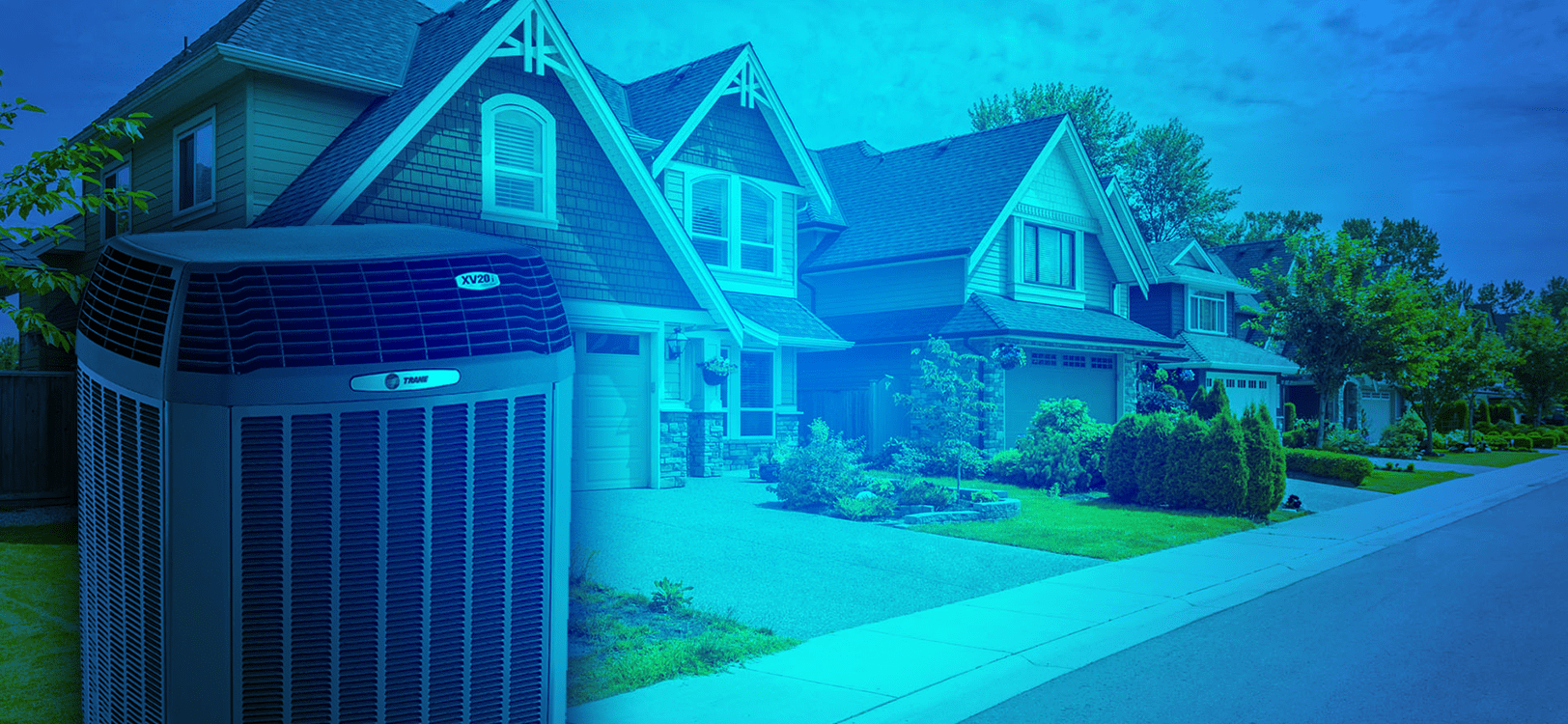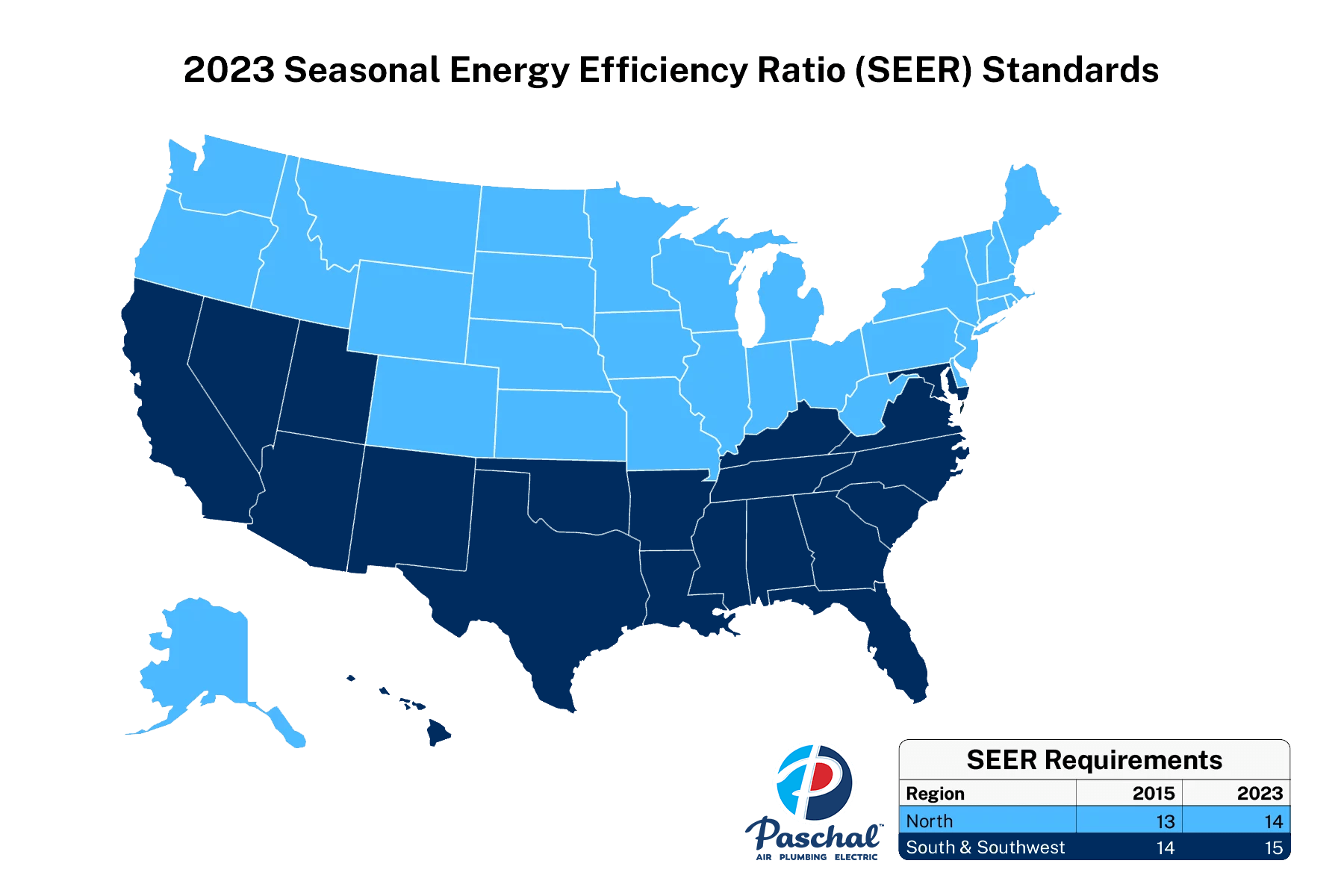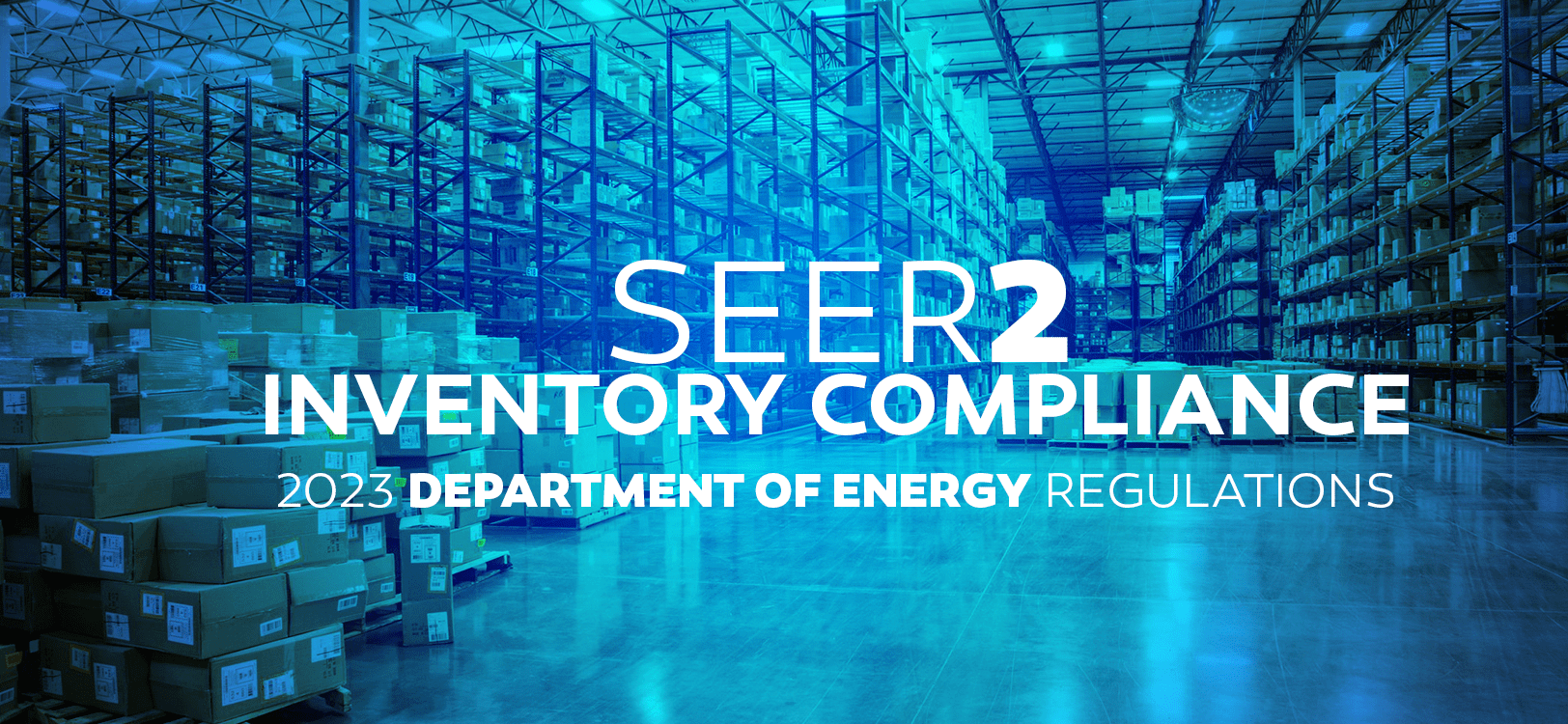Want to save with Paschal? Don’t miss our current offers and specials

Want to save with Paschal? Don’t miss our current offers and specials
Return to Paschal Resource & Education Hub

Beginning in 2023, all new residential central air-conditioning and air-source heat pump systems sold in the United States will be required to meet new minimum energy efficiency standards. The most recent minimum energy efficiency standards for these equipment types went into effect in 2015, and for the first time, separate standards were set for cooling central air conditioners sold in the northern parts of the United States and those sold in the southern parts. The new standards continue to set different cooling efficiency levels for air conditioners in the south, and they also require an increase in the heating efficiency of all air-source heat pumps. The SEER2 protocol was developed in 2016 and will replace SEER in 2023. The U.S. Department of Energy (DOE) has developed SEER2 to rate efficiency using roughly similar numbers.

The Department of Energy (DoE) announced new updates regarding the minimum energy efficiency standards for heating and cooling equipment in the United States. The updated regulations to SEER2 will establish that newly manufactured residential and commercial HVAC equipment, including but not limited to air conditioners, furnaces & heat pumps meet updated minimum energy efficiency standards as set forth by the DoE by January 1, 2023. For single-phase residential and light commercial central air conditioning systems, the requirements will vary by region. The new standards effective in 2023 require a seasonal energy efficiency ratio (SEER)—a measure of a system’s cooling performance—of no less than 14 SEER for residential systems in the northern part of the United States and 15 SEER in the southern part of the United States, where cooling loads are a larger share of home energy use. Higher SEER ratings indicate more energy-efficient equipment.
The U.S. Energy Information Administration’s (EIA) 2015 Residential Energy Consumption Survey (RECS) estimates that 76 million primary occupied U.S. homes (64% of the total) use central air-conditioning equipment, and about 13 million homes (11%) use heat pumps for heating or cooling. When defining the new standards, DOE calculated that, in total, households using central air conditioners or heat pumps will collectively save $2.5 billion to $12.2 billion on energy bills during the 30-year period following implementation of the standards.
The United States is divided into three climate regions. Each climate region has its own minimum efficiency standards.
Systems and equipment built before January 1, 2023 can still be installed and sold in this region. Any system manufactured after this date must meet 2023 regulations.
Texas, Tennessee, Florida, Oklahoma, Arkansas, Louisiana, Missouri, Mississippi, Alabama, Georgia, South Carolina, North Carolina, Kentucky, Virginia, West Virginia, Delaware, Maryland
Any equipment that does not meet these standards by January 1, 2023 cannot be installed or sold in the Southeast region.
California, Nevada, Arizona & New Mexico
Any equipment that does not meet these standards by January 1, 2023 cannot be installed or sold in the Southwest region.

The Department of Energy has established a new set of testing criteria & procedures (M1) to take effect January 1, 2023. One of the main differences between SEER and SEER2 is the testing conditions for each rating system. The new testing procedure (M1) will ensure that units are tested to better reflect the realistic field conditions of installed HVAC equipment. : On August 24, 2016, the U.S. Department of Energy (DOE) published a supplemental notice of proposed rulemaking (SNOPR) to amend the test procedure for central air conditioners and heat pumps. The new appendix M1 establishes new efficiency metrics SEER2, EER2, and HSPF2 that are based on the current efficiency metrics for cooling and heating performance, but generally have different numerical values than the current metrics.
This change will allow for a new testing method that better represents actual operating conditions, and it will coincide with a 1% increase in baseline efficiency. That means a SEER2 and HSPF2 rating will be lower than the equivalent SEER and HSPF rating. As an example, a heat pump rated at 15 SEER and 8.8 HSPF equates to 14.3 SEER2 and 7.5 HSPF2.
SEER2 is the total heat removed from the conditioned space during the annual cooling season, expressed in Btu, divided by the total electrical energy consumed by the air conditioner or heat pump during the same season, expressed in watt-hours.

Inventory management in the South & Southwest regions of the United States must become compliant with new regulations regarding equipment installations to ensure that existing inventory that is sold is compliant with the new efficiency standards. Compliance with the 2023 standards is based on the least efficient combination of indoor and outdoor units, commonly referred to as the coil-only rating. This rating is listed on the equipment’s energy guide label. If a range is given, the least efficient rating should be used.
The Energy Policy and Conservation Act (EPCA) of 1975 first gave the U.S. Department of Energy authority to develop, revise, and implement minimum energy conservation standards for appliances and equipment. EPCA requires DOE to periodically amend energy conservation standards for certain equipment, but only if the amendments are energy-saving, technologically feasible, and economically justifiable. The National Appliance Energy Conservation Act of 1987 established the first minimum efficiency requirements for central air-conditioning and heat pump equipment sold in the United States. These standards went into effect in 1992, and later updates went into effect in 2006 and 2015.
The FTC requires mandatory labels for some home appliances to help homeowners and consumers compare energy usage and costs of equipment and appliances. The FTC published updates regarding EnergyGuide labels – to include language regarding SEER2, EER2 & HSPF2. All 2023 compliant products will include a new EnergyGuide label with the SEER2, EER2 and HSPF2 ratings.



SEER is a measurement of cooling mode efficiency for refrigerant-based HVAC systems including air-conditioners and heat pumps. HSPF is the heating mode efficiency counterpart. HSPF2 is the updated regulation
These regulations were developed by a working group representing a broad and balanced array of stakeholder interests and expertise, and included efficiency advocates, manufacturers, utility representatives, contractors, and distributors.
Regional Standards Brochure – for installers and purchasers of central air conditioners.
DOE will post information about regional standards violations here. It is illegal to sell a routine violator any kind of central air conditioner (including heat pumps).
New minimum efficiency standards will mean that older systems that do not meet 2023 SEER2 requirements will be phased out. This can mean that parts will no longer be manufactured for these units, and repairs could become more and more expensive over time. If your unit is more than 10+ years old, it could be time to consider replacement options. It is important to get a consultation with a professional HVAC company to discuss options for repairs and replacements on older heating and air equipment and systems. Paschal Air, Plumbing & Electric provides free estimates on HVAC replacements for those in our service territories.
[gmap-embed id=”73870″]